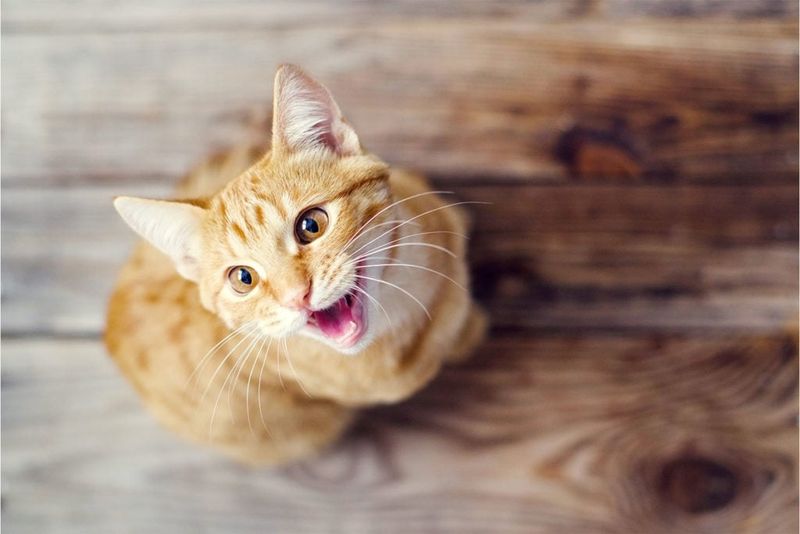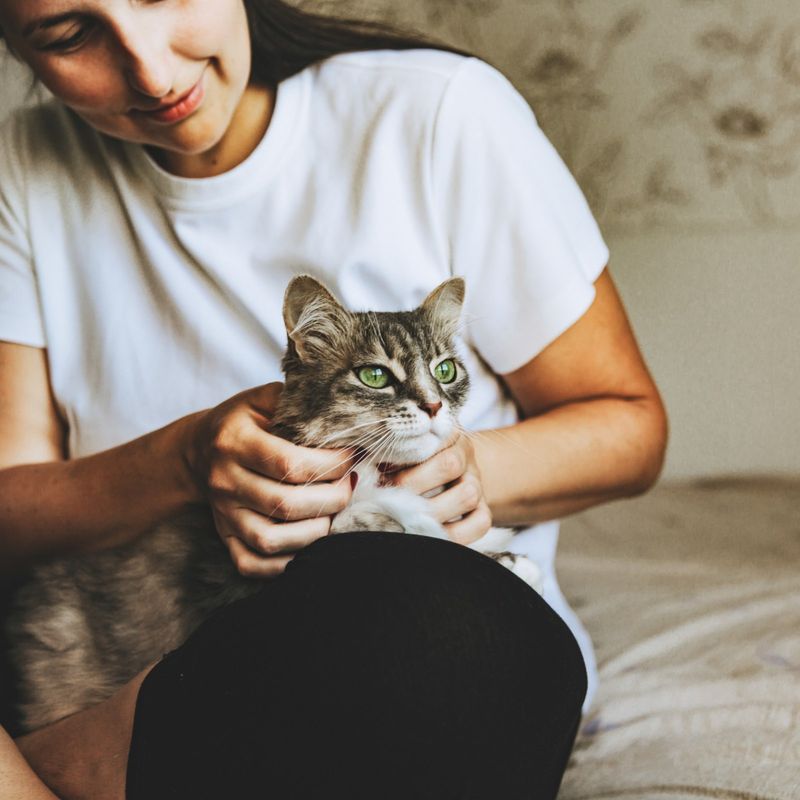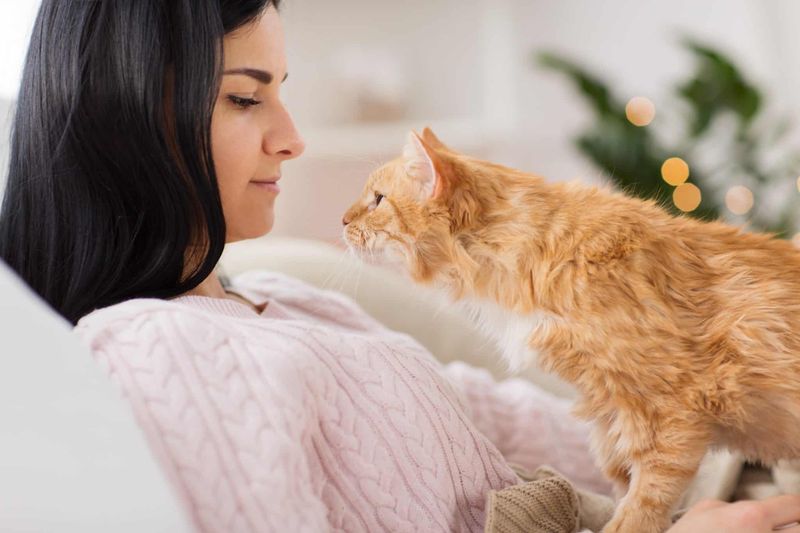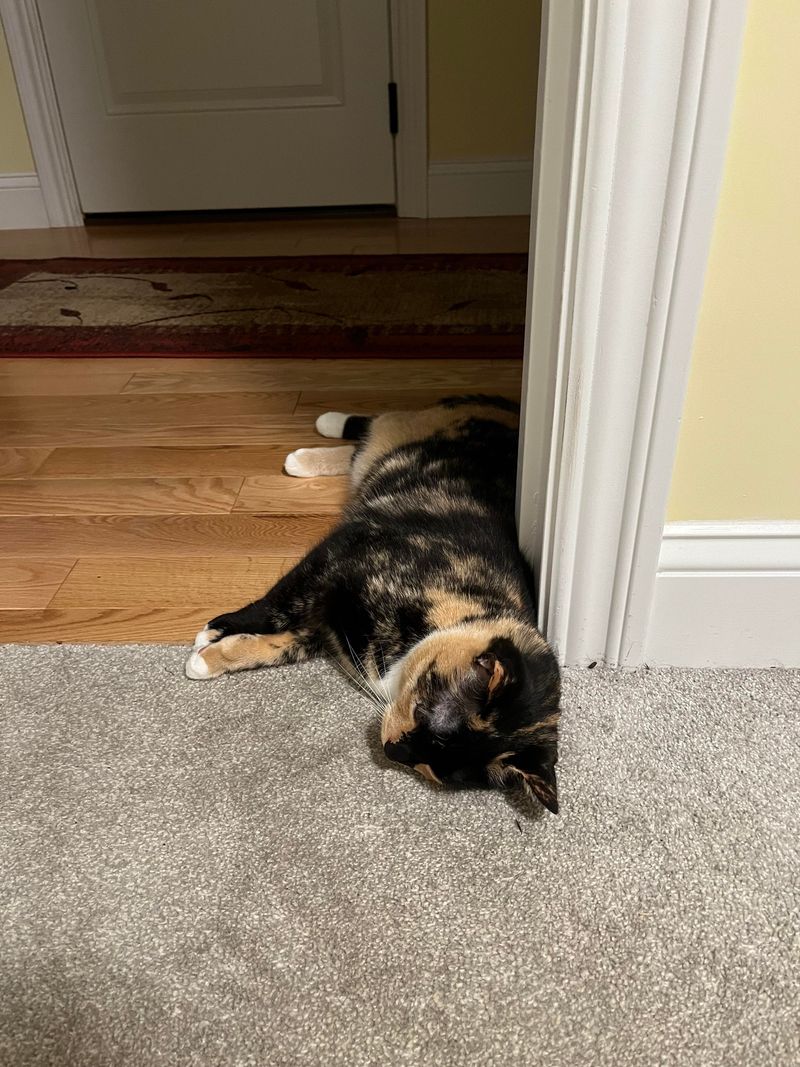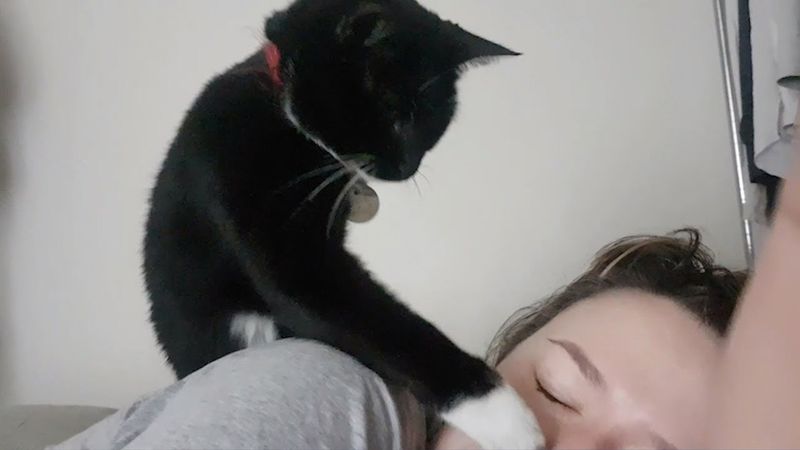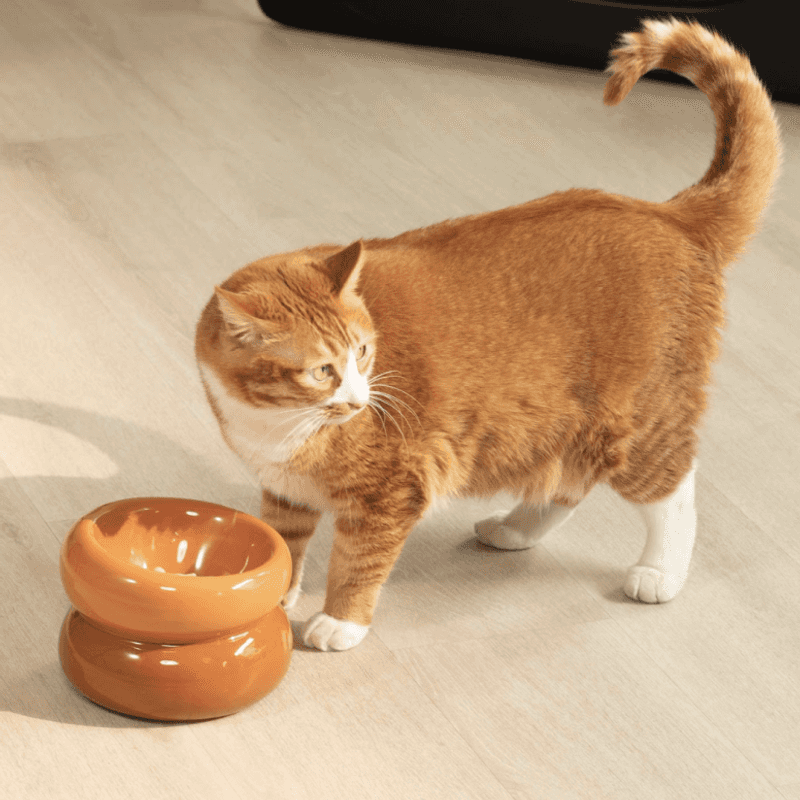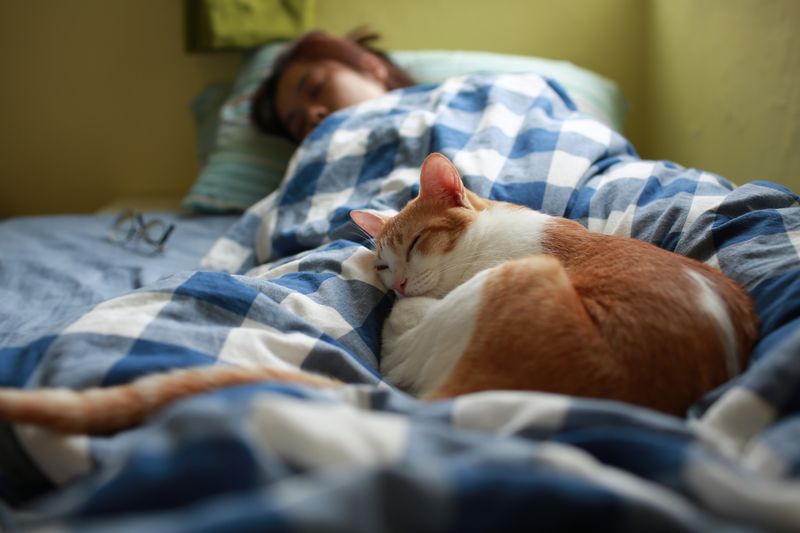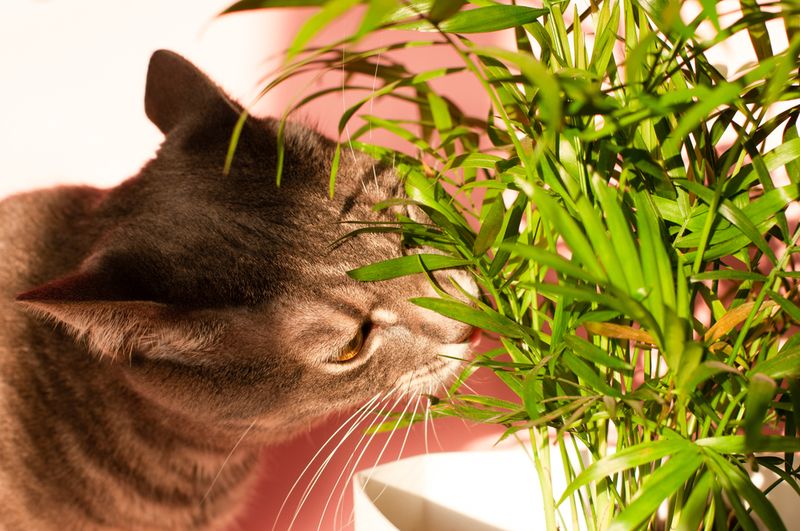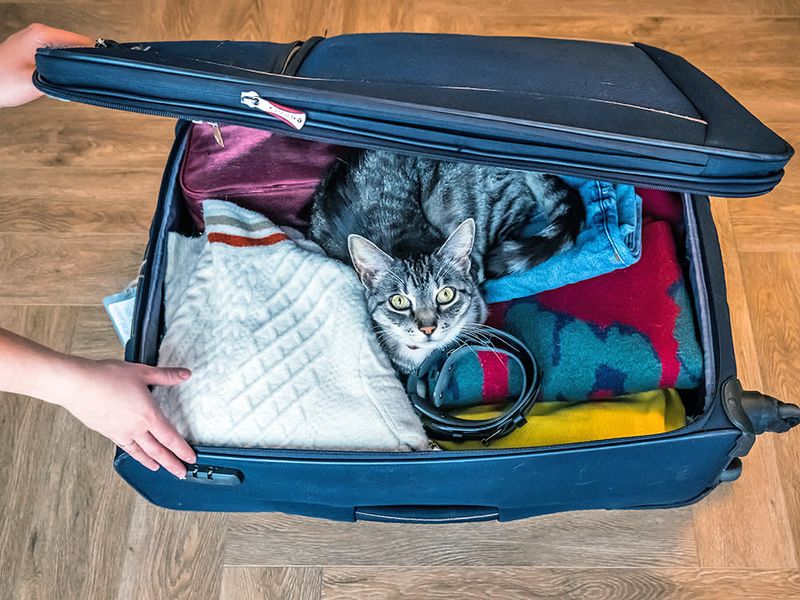📖 Table of Content:
Cats have an uncanny ability to influence the behavior of those around them. With every purr, stare, or gentle paw tap, they often get their needs met—on their terms. Their methods are quiet, calculated, and surprisingly effective.
Through repeated actions and clever timing, cats subtly shape daily routines. They learn what works and repeat it with precision, from early morning wake-up calls to snack-time stares. Over time, their preferences start to feel like house rules.
The human-cat relationship is full of unspoken negotiations. While it may seem like the humans are in charge, cats often pull the strings behind the scenes. Their charm and persistence make them some of the most skilled “trainers” in the animal kingdom.
1. The Perfect Meow
Cats have perfected the art of meowing to communicate their needs. Ever notice how your cat’s meow changes depending on what they want? This isn’t just random. Over time, cats adjust their meows to elicit specific responses from their owners.
A gentle, cooing meow might mean they’re hungry, while a louder, more persistent one could signal they’re in need of attention. These vocalizations are not only effective but finely tuned to each owner’s reactions. Listening to your cat’s meows can become a delightful puzzle where you must decode what they want, making you more attuned to their needs.
2. Strategic Toy Placement
Ever tripped over a cat toy conveniently left in your path? This isn’t just a coincidence. Cats often place toys in strategic locations to subtly suggest it’s playtime. These quirky felines know that your curiosity will be piqued, leading you to engage in a spontaneous play session.
The placement of toys in high-traffic areas ensures that you can’t ignore them, keeping your cat entertained and active. Observing these placements can provide insights into your cat’s playful mind, making you more responsive to their silent requests for interaction.
3. Lap Occupancy
Just when things get hectic, a cat appears on your lap like it’s their rightful throne. They sense the perfect moment to settle in, whether you’re mid-task or trying to unwind. This cozy interruption is part comfort, part strategy.
By enveloping you in soothing purrs and soft fur, they create a cocoon of calm that makes getting up nearly impossible. This lap occupation becomes a training session, teaching you to prioritize relaxation and companionship over mundane tasks.
4. The Stare Down
Few things are as mesmerizing as a cat’s unblinking stare. This focused attention isn’t merely curiosity; it’s a calculated move to communicate desires. A cat might fix their gaze on the pantry door when they’re hungry or on you if they want to play.
This silent communication method often results in owners acquiescing to their feline’s wishes. The power of the cat stare is in its persistence, compelling you to act even without words. Over time, you’ll find yourself responding instinctively to these silent cues, becoming more attuned to their needs.
5. Doorway Blocking
Stationing themselves in doorways, cats seem to enjoy being at the center of everything. It’s not just about lounging—they’re placing themselves right where your attention has to pass. It’s a quiet, clever way of influencing your next move.
These impromptu blockades often result in a quick petting session or a detour around their fluffy bodies. This behavior teaches owners to be more mindful of their feline companions and to accommodate their whims.
6. Early Morning Wake-Up Call
Forget the snooze button—cats prefer a more direct approach. A paw to the cheek or a chorus of meows usually gets the job done. It’s a routine they’ve perfected to make sure their needs come first.
Over time, you’ll find yourself adjusting your schedule to accommodate their morning rituals. The routine becomes a shared experience, reminding you of your cat’s role in setting the pace for the day ahead.
7. The Food Bowl Rattle
The sound of a rattling food bowl is an unmistakable sign of a cat’s hunger. This tactic is cleverly employed to draw your attention to their empty dining area. By creating noise, cats break through distractions, ensuring you respond promptly to their culinary needs.
The food bowl rattle becomes a ritual, one that trains you to anticipate meal times. Through this playful yet effective method, cats teach you the importance of routine, subtly setting their feeding schedule with finesse and charm.
8. The Bedroom Snuggle
As night falls, cats often curl up next to their owners, creating a nighttime ritual that strengthens bonds. This snuggling isn’t just for warmth; it’s a strategy to ensure they’re part of your nightly routine. By nestling close, they provide comfort and companionship, turning bedtime into a shared experience.
This habit encourages you to slow down and appreciate the quiet moments together. Over time, the bedroom snuggle becomes a cherished part of your nightly ritual, reinforcing the unique connection between you and your feline friend.
9. The Plant Nibble
A quick bite of a houseplant often doubles as a clever cry for attention. It’s a playful mix of curiosity and communication. Cats know this trick gets a reaction—and maybe a little more interaction.
By observing their plant preferences, you learn to provide suitable alternatives, creating a more enriching environment for them. This behavior highlights the importance of interactive play and environmental enrichment.
10. The Suitcase Sabotage
Packing for a trip? Expect a cat to make themselves comfortable in your suitcase. This behavior isn’t just endearing; it’s a way for cats to express their desire for you to stay. By occupying your luggage, they subtly protest against your departure, hoping to keep you home.
This tactic often results in extra cuddle time or a playful distraction, ensuring you acknowledge their presence before leaving. The suitcase sabotage reminds you of their preference for routine and closeness, reinforcing the bond you share.

